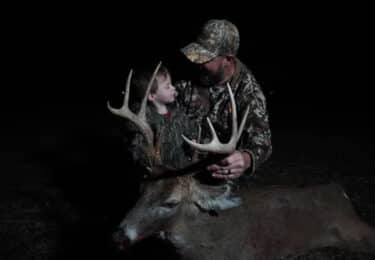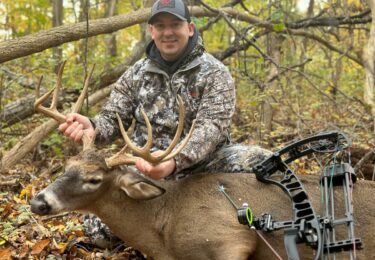Today, we’re breaking down everything you need to create an awesome food plot from site selection to maintenance.
SITE SELECTION
Select a site that is somewhat drained of water meaning you don’t want to be attempting to plant a food plot in an area that has standing water relatively year round.
Consideration of sunlight is also another factor that you will want to look at. Depending on the type of food you will be planting you may need a site that gets full sun or if your planting a shade tolerant species you may be able to get away will a site that only gets partial sun.
SOIL TEST
After you select your site for your food plot you will want to take a soil sample. This consists of taking a soil probe and punching it into your site. You will only need to sample the first 4 inches of the soil. After this you can send your soil sample to numerous labs for a fee or take your sample into your local Lowes. A lot of your state University Extensions will test your soil pH as well as nutrients.
LIMING AND RAISING pH
After you’ve received your soil sample you will have a pH reading. The closer the pH reading is to 0 means the more acidic your soil sample is. The closer your sample is to 10 the more alkaline or basic your soil is. For ideal conditions you will want your pH to be at 7 which is considered neutral. If your soil is acidic, which is the most common you will need to add lime. Lime will raise the pH.
Raising the pH can take potentially years and require a lot of lime depending on how acidic your soil is. So remember that food plots are a marathon and not a sprint. Once you reach ideal conditions you won’t have to add lime for many years after.
FERTILIZING
Adding fertilizer is feeding your food plot. Almost all fertilizers have 3 numbers on the bag designated like this XX-XX-XX. The first set of numbers is the percent of nitrogen found in that size bag, the next is phosphorus and the last is potassium. So when you receive a soil sample that reads the amount of nutrients in your soil these are the nutrients you will want to look at to see how high or low they are in your soil. Depending on what plant your planting you will want to adjust your fertilizer accordingly.
PROPER CULTIVATING
Lime and fertilizer will need to be worked into the soil. So the use implements such as a disc, roto-tiller or harrow will be needed for this step. When using these tools you will only want to work the top 4 inches of the soil. Going too deep into the soil can be detrimental to your food plot as you will be below the topsoil where all the organic material is located for efficient plant growth. Also when you are ready to plant and till too deep your seeds will be buried and not able to sprout through the depth that they have been planted in.
SEEDING YOUR FOOD PLOT
 Depending on the species of plant you are planting it will require different depths in the soil. Typically smaller seeds require less depth to be planted and larger seeds require deeper depth.
Depending on the species of plant you are planting it will require different depths in the soil. Typically smaller seeds require less depth to be planted and larger seeds require deeper depth.
Soil to seed contact is very important. Again this depends on each individual’s food plot but it may need cultipacked before being seeded. This is typically needed in clay soils. In more loamy soils cultipacking won’t be needed.
Be sure to read the instructions on the bag of the seeds you are intending to plant. Almost all manufactures will provide instructions on seed depth recommended for their product. After all they want you to be successful so you continue to buy their products.
FOOD PLOT MAINTENANCE
This can sometimes be a controversial topic especially with all the new information coming out about commercial herbicides. So we will recommend the steps to take in herbiciding your plot that is beneficial for both wildlife and nature as a whole as well as you the hunter.
Selecting the proper time to herbicide your plot is the most important step. When herbiciding your plot for undesirable plants utilization of herbicide during non flowering times is critical. This will prevent pollinators from ending up eating the herbicide you just got done spraying. Saving these pollinators is beneficial for you as a hunter as well. If the location you have has fruit trees you will need these pollinators to pollinate your trees so that you have fruit in the upcoming fall and reducing the numbers isn’t beneficial for you. If your plot is already flowering mow the tops so that you knock off the flower and apply the herbicide that you select. The mowing will not negatively affect your plot the flowers will regrow very quickly.
Some plots will receive a lot of grazing pressure from your deer herd this is beneficial but can turnout to be a big problem if the pressure is too high. In areas with a high deer density your plot can get extremely stunted due to grazing pressure. In order to combat this issue applying a liquid fertilizer when plants are a minimum of three inches high can be the answer. Depending on how heavy the grazing is you may need to apply fertilizer every three to four weeks.


